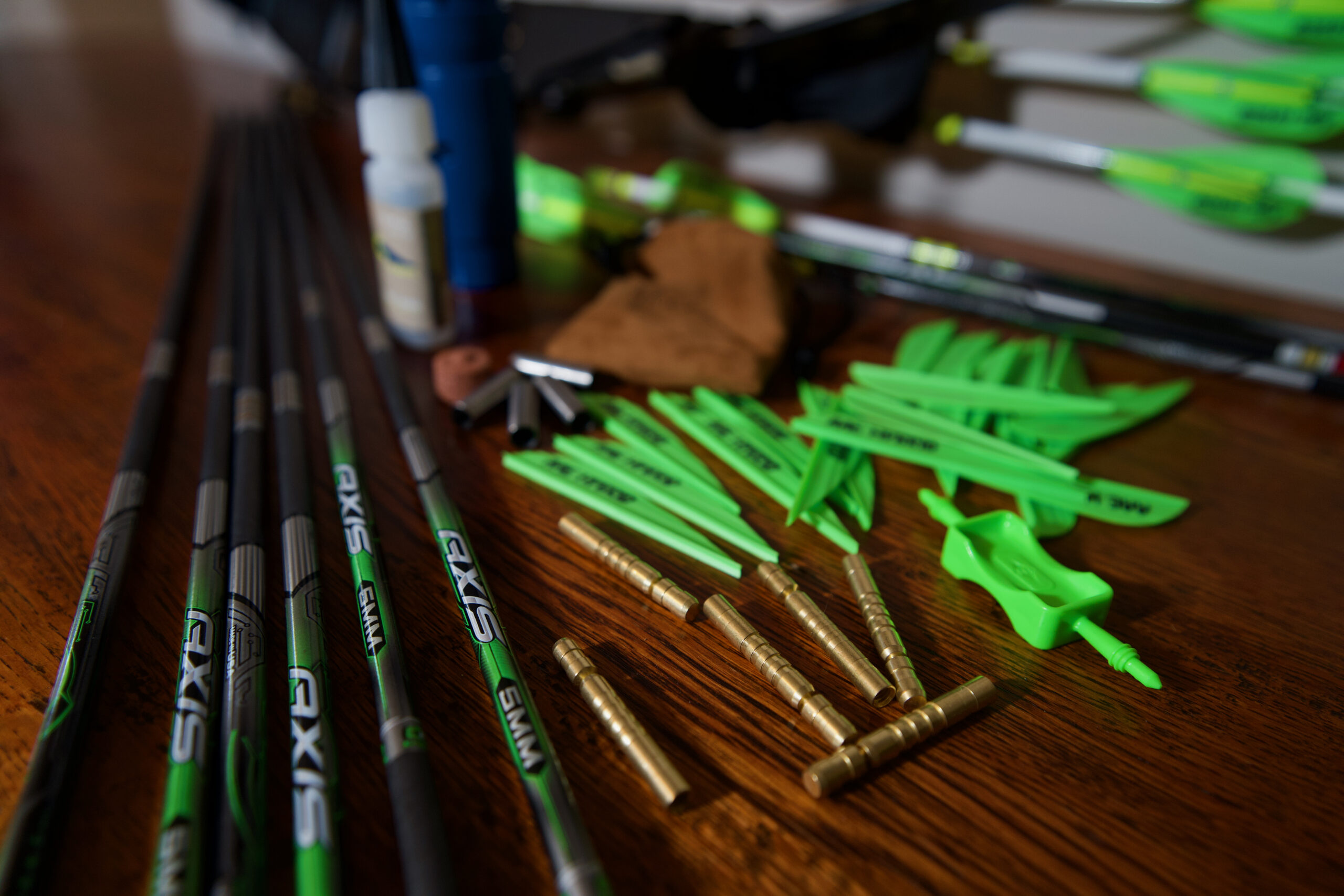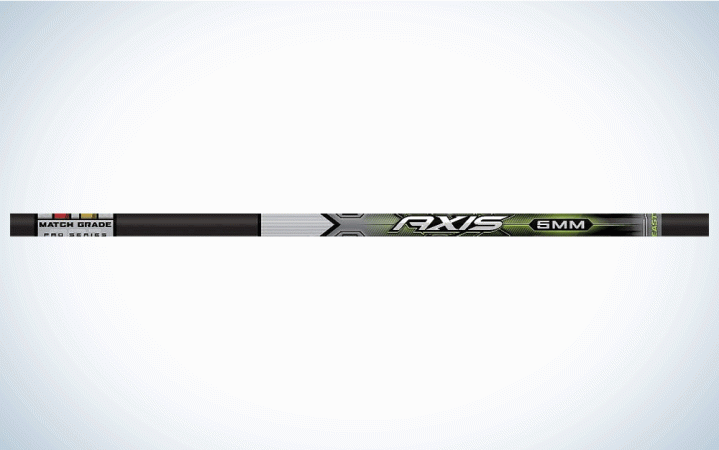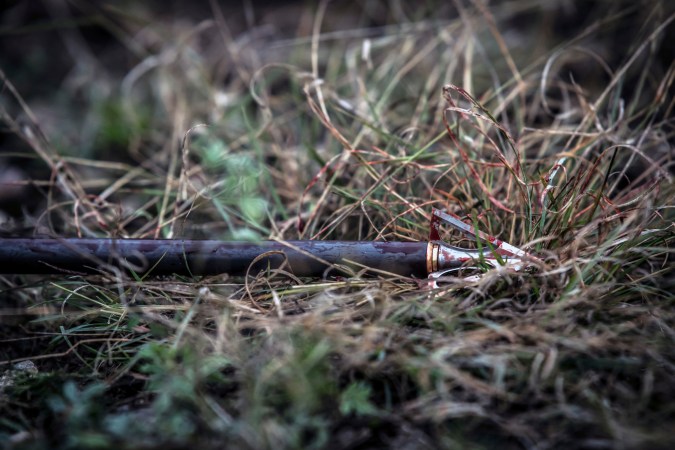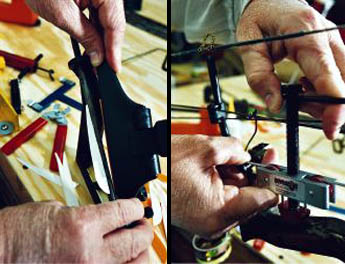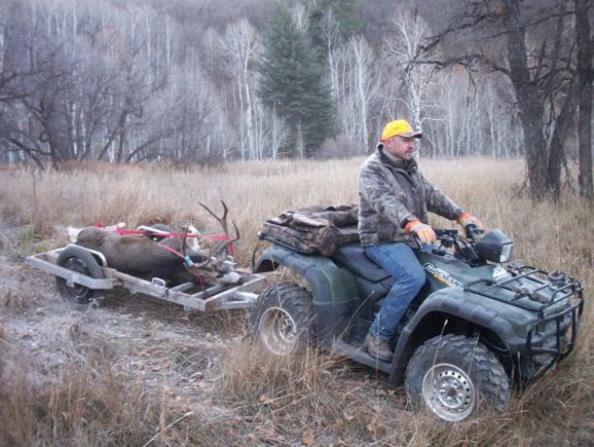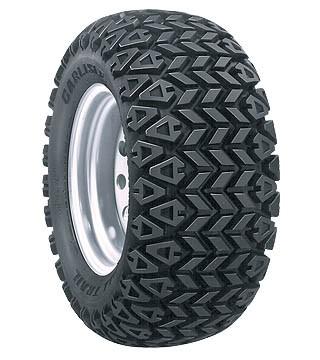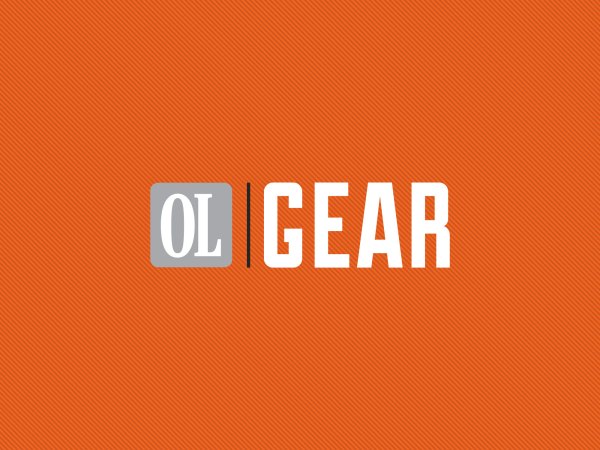We may earn revenue from the products available on this page and participate in affiliate programs. Learn More ›
I’ve gone through the very expensive trial-and-error process of shooting nearly every hunting arrow. Many of them were good—and some sucked—but if I had to choose one, it would be the Easton Axis 5mm. It has the durability, tight tolerances, small diameter, and reasonable price I look for in a hunting arrow. But is it the best hunting arrow for you? Here’s the info you need to make the call.
Easton Axis Arrows 5mm Pro Specs and Features
- Spine: 260 to 700
- Grains per inch: 9.5 (340 spine)
- Outside diameter: .267 inches
- Inside diameter: .204 inches
- Straightness: .001 inches
- Nock size: X nock
Easton has smartly created Axis shafts in spines and models that will work for any archer or bowhunter. Whether you’re on a tight budget or want to build a Gucci setup, there’s an Axis for you. And if you’re a short draw or a heavy bow shooter, there’s also an Axis for you.
No matter which model you go with, they all share the same key features. Here are some of the features that make the Easton Axis one of the best arrows for hunting.
HIT System
Axis shafts don’t use the insert you commonly see in 5/16 inch diameter arrows. They use Easton’s Hidden Insert System. The inserts are seated a little inside the shaft using the tool provided with your arrows. This allows the use of standard field points in a small diameter arrow, without needing to use a halfout. The main benefit of a HIT is that it aligns the point or broadhead with the inner diameter of the arrow shaft, which increases consistency and you’ll have fewer problems getting broadheads to spin true.
Tolerances
The standard Easton Axis 5mm has a .003 straightness tolerance. The more expensive Axis Pro has a .001 straightness tolerance. The least expensive in the lineup is 5mm Axis Sport in .006 straightness. I recommend the Axis Sport for short-draw archers who will cut off a large part of the shaft, since the straightness run out will worsen toward the shaft’s ends.
Diameter
The outer diameter of an Easton Axis ranges from .245 inches in the 700 spine to .280 inches in the 260 spine. It’s not the smallest diameter shaft, but it is smaller than a standard carbon arrow. For perspective, the inner diameter of a standard carbon arrow is .245 inches, so you can fit a 700 spine Axis inside one. The smaller diameter reduces wind drift and aids in creating a more durable shaft thanks to the thicker wall.
Spine
Archers shooting 35 to 80 pounds will find an Axis spine that fits their bow. The lightest spine the Axis shafts are available in is 700, which will work for all but the lightest draw weight compound bows. The stiffest spine is a 260, which is sold at a 34-inch stock length. That spine will work well for long draw archers, heavy bow weights, and anyone that wants to load up the front of their arrow with a ton of weight. The Axis, of course, comes in all the spine sizes in between, like the always popular 400 and 340.
Weight
The 340 spine Easton Axis weighs 9.5 grains per inch. That means a 28-inch (carbon to carbon) bare shaft will weigh 266 grains. If you build that arrow with a 100-grain point, you’ll end up with a 400 to 450-grain arrow depending on your components—a good medium-weight arrow. But let’s say you want to build a slightly heavier arrow. You can use a 300 spine Axis at 10.7 grains per inch to give you a starting weight of 300 grains. With a brass HIT insert and the same 100-grain point, you’ll be in the 500 to 550-grain range.
Testing the Easton Axis Arrows
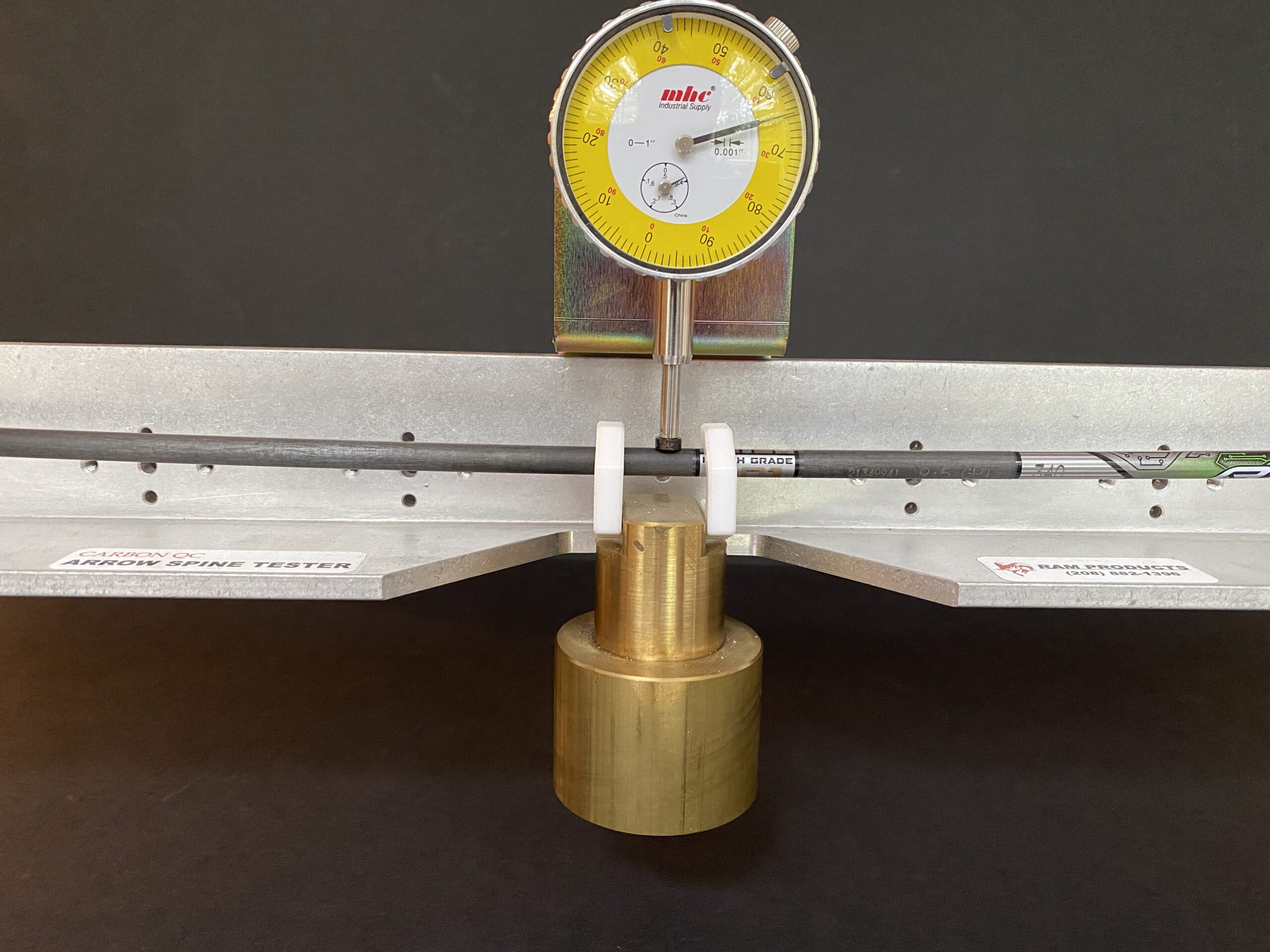
I’ve shot the Easton Axis and its variants for years while bowhunting and shooting 3D. They always grouped well at distance in my experience, and I’ve had very few flyers. Bowhunters will appreciate knowing that, as long as the broadhead wasn’t the problem, I’ve never had an issue aligning the shaft and broadhead.
Spine and Straightness
Good broadhead flight and tiny groups are the result of tight tolerances. But some arrow specs are important; others, not so much. Most people won’t notice a five grain difference between arrows. Yet most people can shoot the difference between a 300 and 350 spine arrow, especially when shooting broadheads.
With my Ram Arrow Spine Tester, I can test the Axis shafts’ straightness and spine consistency. The packaging on my Match Grade Axis claims a .001 straightness. The .001 spec is inches of deflection. When I tested the Axis shafts, many of my arrows were not at the advertised .001 spec. They were .0005, which is straighter than advertised. Well done, Easton.
For spine testing, I used the ATA standard 1.94-pound weight and 28-inch span. I checked the spine on each arrow around the entire circumference of the shaft. The average spine on my 340 spine was in fact 340 with an average of .002 change around the circumference. That’s a very consistent spine across a dozen shafts that cost about $150 a dozen.
Durability
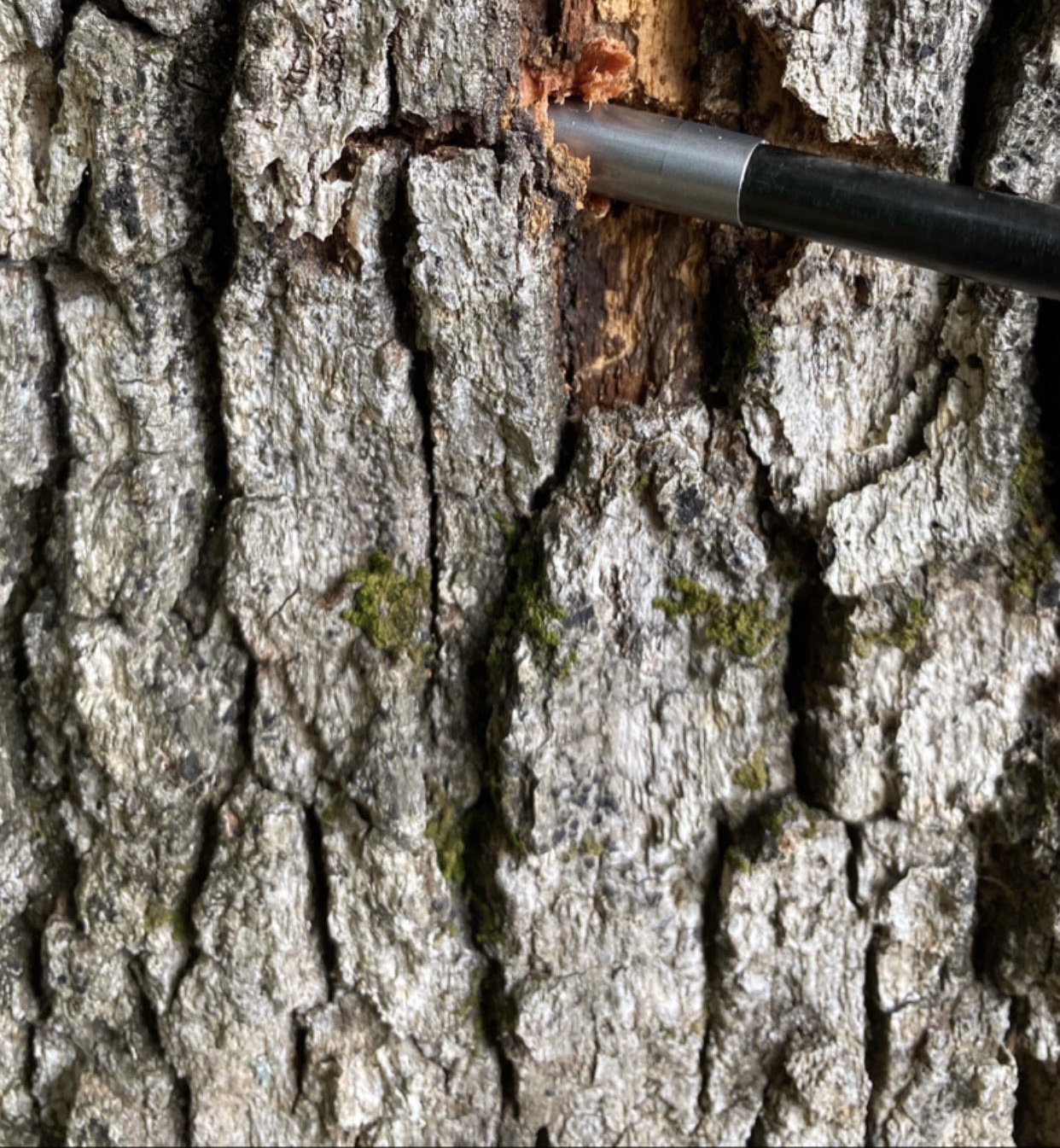
Most people consider reduced wind drift and increased penetration the top advantages of small diameter arrows. But to me, the advantage is you get a thicker wall than the same spine standard diameter arrow. For example, the wall on my Axis 340 is .063 inches, and an Easton Acu-Carbon Bowhunter has a wall thickness of .053 inches. That thicker wall means more durability. So if you’re smashing through bone or into the cambium of an oak tree, you’ll stand a better chance that your arrow will survive the impact.
Easton Axis arrows are durable but they do have a weak point. The area between the hidden insert and the end of the shaft is bare carbon with no added support. It’s prone to cracking or mushrooming. To be clear, I’ve shot through a lot of deer with Axis and other Easton arrows with a HIT insert without issue. The issues I’ve had with breakage were mostly from hitting rocks, points left in 3D targets, and the occasional tree.
Iron Will has a solution for making Axis arrows indestructible. They make a sleeve that slides over the end of the shaft to reinforce that end of the arrow. They’re so durable that I shot an arrow into an iron buck target—with my recurve—and the arrow just bounced off with no damage other than a missing nock.
My Favorite Axis Arrow Build
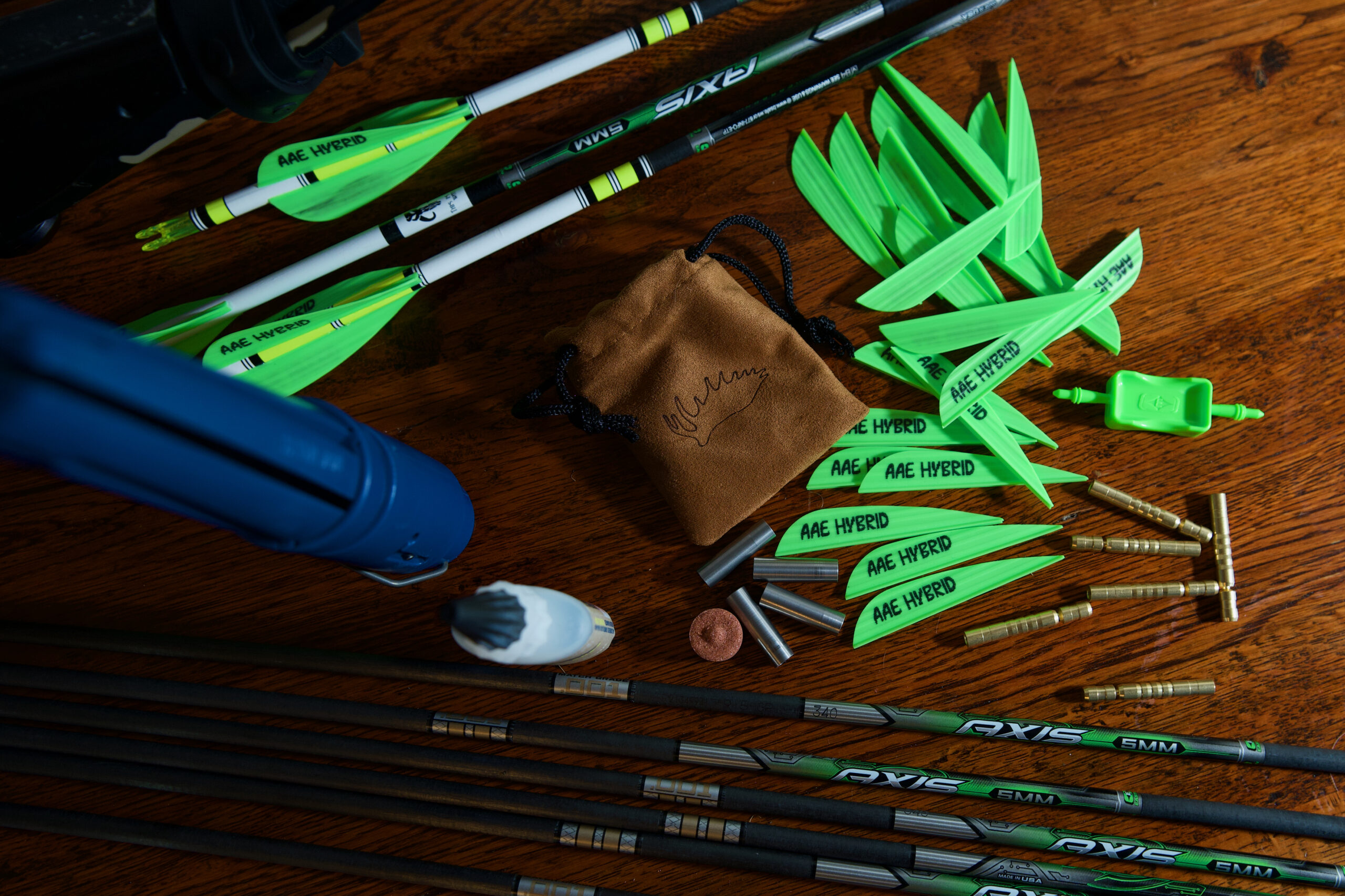
All my Axis builds have Iron Will impact collars. I’ve been hunting with the same set for two years now. They’ve survived shooting deer, stump shooting, 3D courses, and being dug out of a few trees. All that I’ve done is change nocks and refletch when necessary. I find the added cost is worth the longevity the collars give my arrows.
Another addition I make to all my Easton Axis arrows are Beiter hunter nocks. The Easton X nocks that come with the shafts work fine, but years of tournament archery experience has shown me that good nocks are a worthwhile investment. Beiters all come from the same mold, so you’ll get a precise and consistent nock fit from each one. They also last longer than other nocks I’ve tested.
My current go-to fletching configuration is an AAE Hybrid 26 fletched with an Arizona E-Z Fletch Mini Max jig. The result is a quiet vane fletched with an extreme helical. In my opinion, it’s the ideal close to mid-range fletching because they stabilize an arrow quickly and have plenty of correction for fixed blade broadheads.
Other Axis Offerings
Easton has several shafts in their Axis line, and I like most of them. The only Axis shaft that I personally don’t recommend is the FMJ. While I embrace the benefits of an aluminum-carbon shaft (I shoot pro competitions for target archery), I don’t like arrows that can bend and come out of spec for hunting. While the FMJs are robust, I don’t think their benefits outweigh the potential drawbacks, especially when all-carbon arrows are so good. I also don’t prefer the Axis shafts that are smaller in diameter than the 5mm because they require Deep Six components, which use a different thread pattern than standard broadheads and field points. It’s not that the Deep Six is a poor design—it’s that I don’t want to buy new broadheads to add to my pile of hunting gear.
What the Easton Axis Arrows Do Best
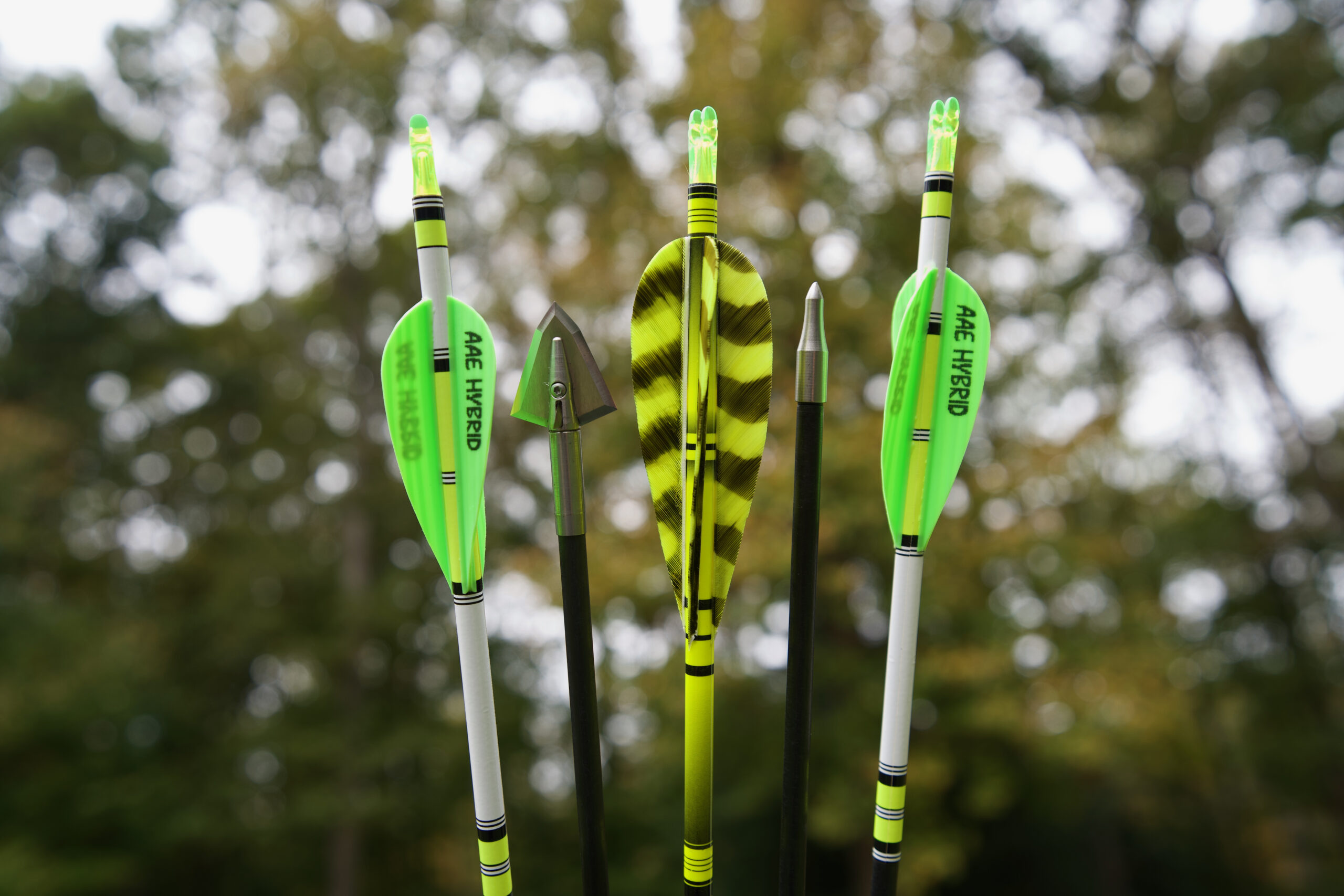
The Easton Axis is the perfect happy medium arrow. It’ll work well for just about any application and excels at standard archery hunting distances (20 to 40 yards). You can easily build an arrow weighing 450 to 600 grains by adjusting your spine and point weight. They’re also tough as nails with an Iron Will collar and they offer a lot of value for their price.
What the Easton Axis Arrows Do Worst
If you don’t want to fork over the extra $70 a dozen for Iron Will collars, the Axis shaft is prone to splintering or mushroom at the tip. I think the best way for Easton to improve on the Axis is to offer a precision-machined collar as an optional component. It’s worth noting that Easton does have a halfout for the Axis shafts, but my previous experience with halfouts from other companies has left me skeptical of their durability and ability to spin true.
The Axis isn’t the perfect arrow for shooting long ranges due to its diameter. Other arrows like the Black Eagle X-Impact (.228 outer diameter) will have less wind drift and have quality components.
Final Thoughts on the Easton Axis Arrows
In the words of well-known bowhunter, Aron Snyder, “Pick an arrow that works for you, buy three dozen, and turn off Instagram.” For me, it’s the Easton Axis arrow. It’s my top recommendation if you want an arrow shaft that will last multiple seasons and has extremely tight tolerances.

